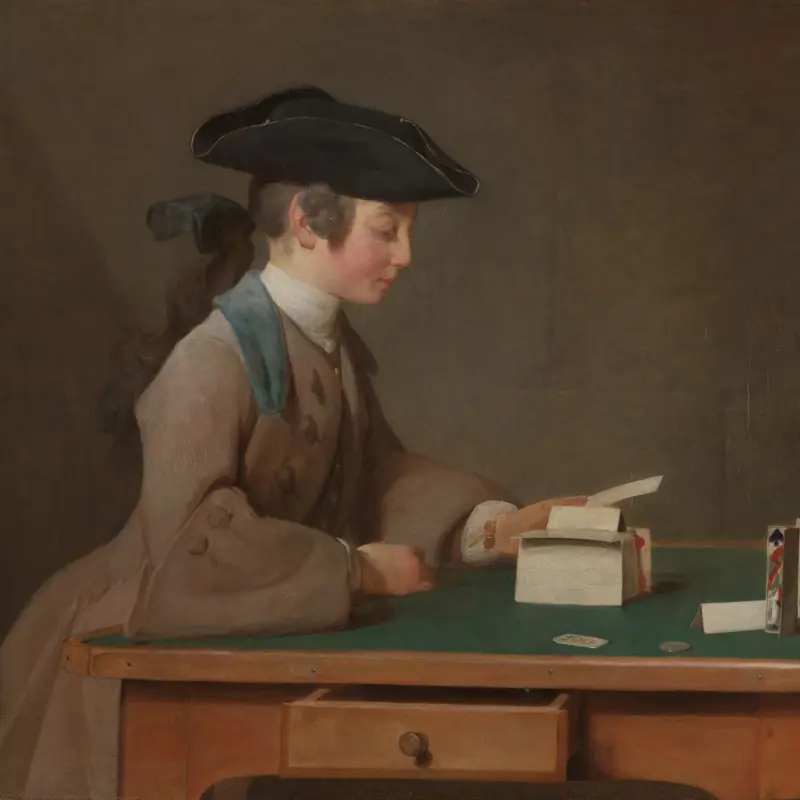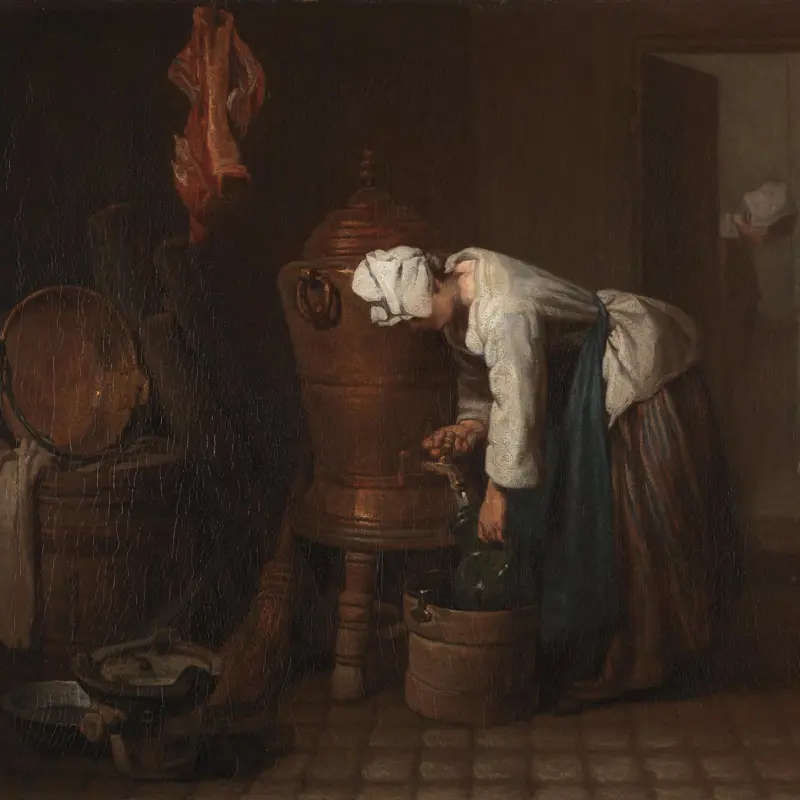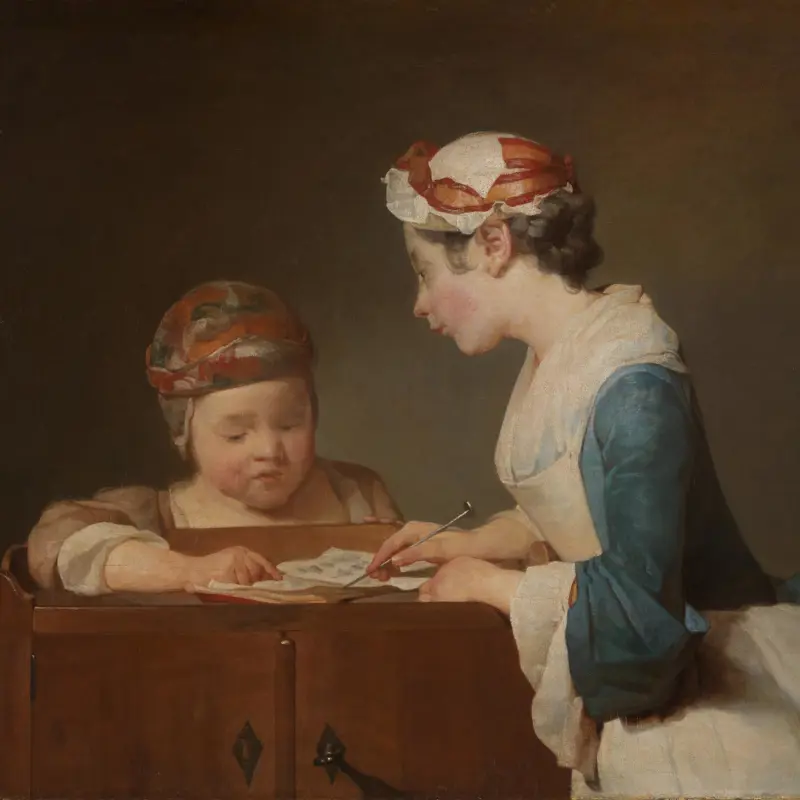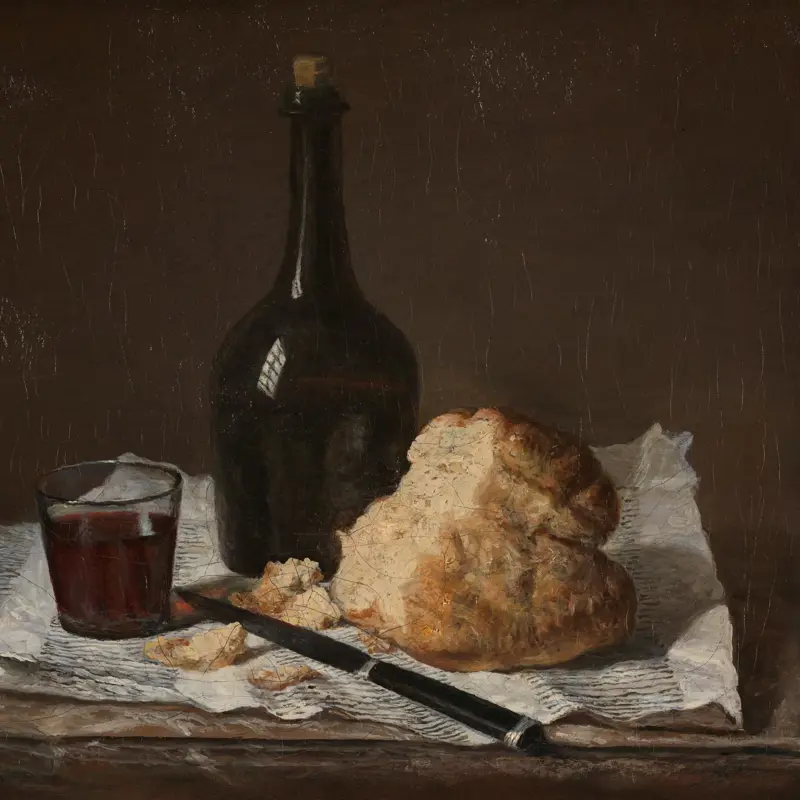Chardin is renowned for the quiet charm of his carefully constructed genre scenes and still lifes. His skill at recording the look and feel of objects was astutely commented upon in the 19th century: '... never, perhaps, has the material fascination of painting dealing with objects of no intrinsic interest and transfiguring them by the magic of handling been developed so far... Who has expressed, as he has expressed, the life of inanimate objects?' The Goncourt brothers
Chardin, a carpenter's son, was born in Paris. He was apprenticed to the painter P.-J. Cazes, and also assisted Noel-Nicolas Coypel, passing through the Académie de St-Luc. His output falls into distinguishable phases. In 1728 he was inscribed in the academy as a painter 'of animals and fruits'. In addition to still life, Chardin turned to genre pieces reflecting the domestic values of order, industriousness,education and affection. His major sources were the domestic genre of 17th-century Dutch Art.
From the early 1730s until the early 1750s his output was principally of genre scenes. He then returned to still lifes and, at the end of his career, a few pastel portraits.
Jean-Siméon Chardin
1699 - 1779




